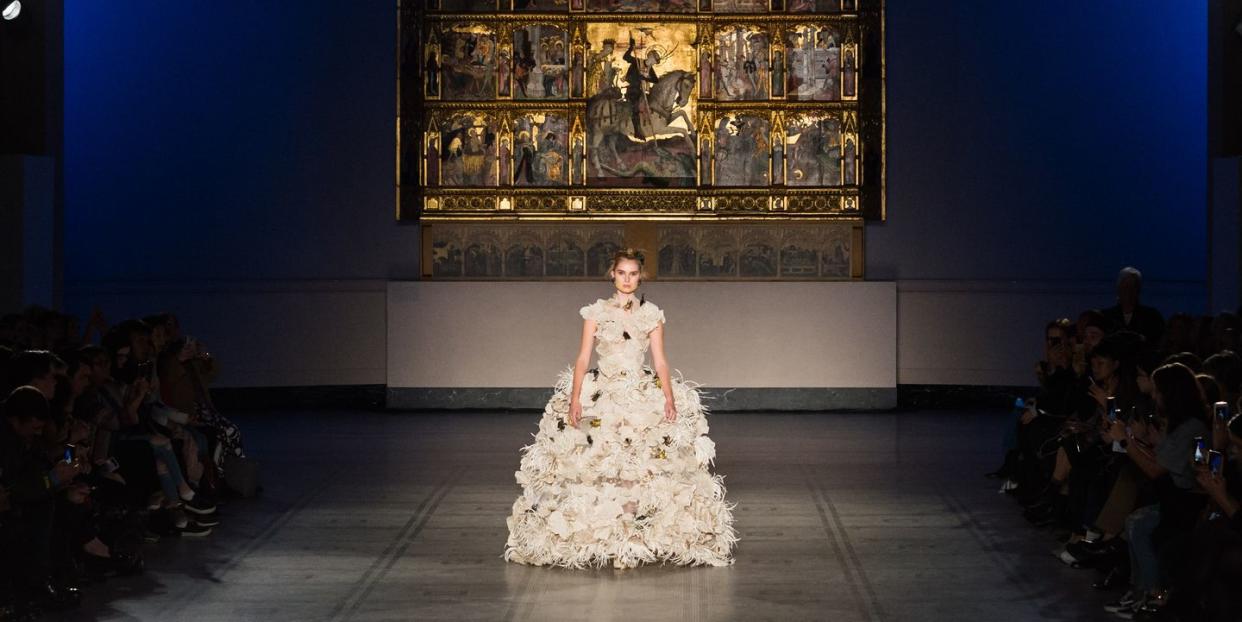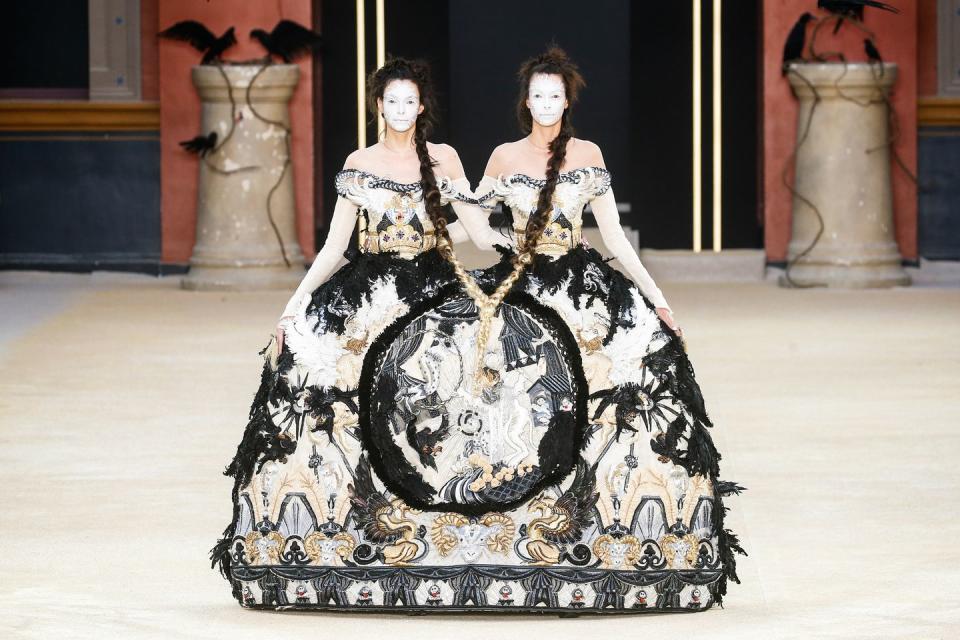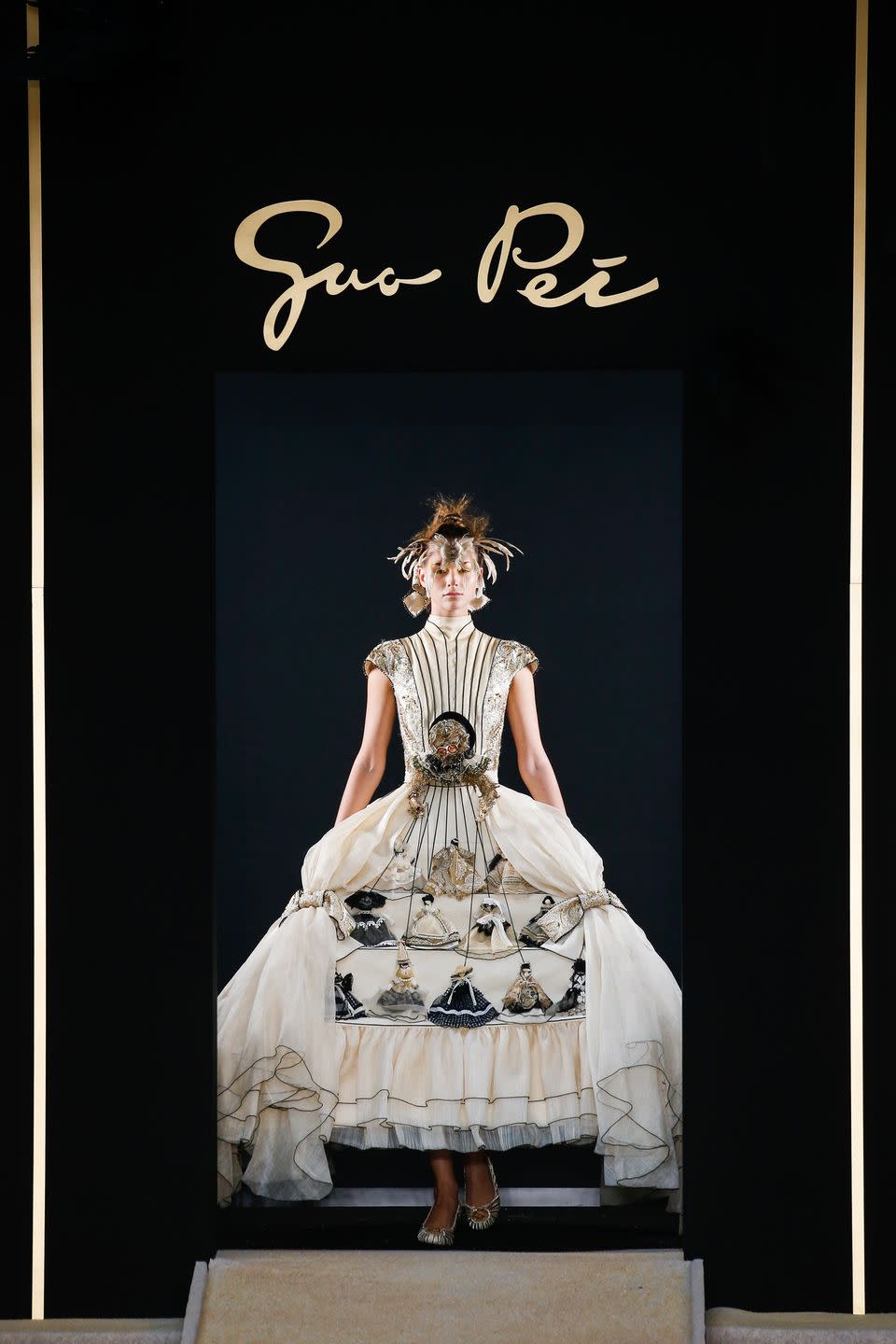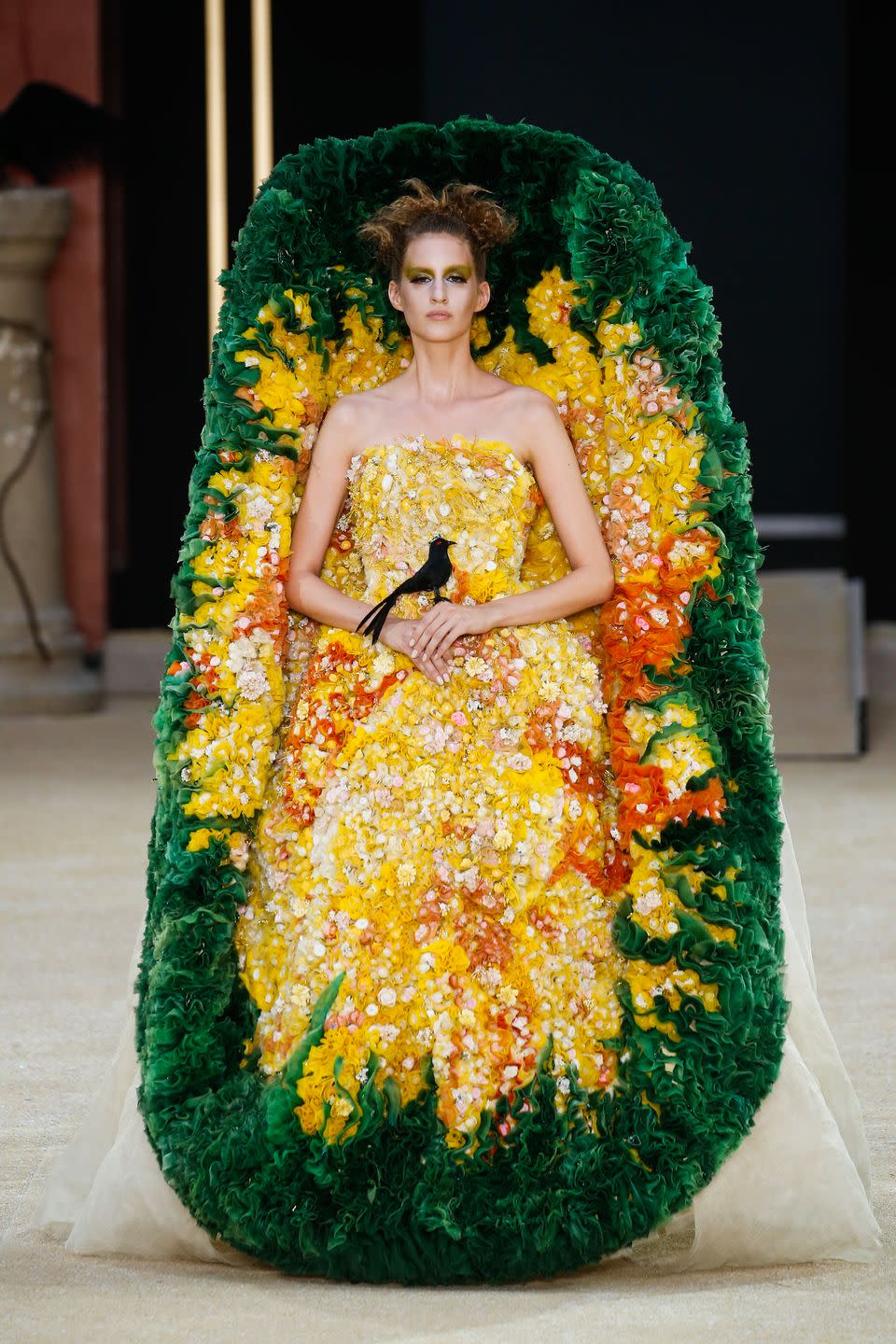Inside the world of China's couture queen: Guo Pei

Guo Pei’s rise to fame happened quite literally overnight. On 4 May 2015, Rihanna wore the label’s now-famous Yellow Empress gown to the Met Gala – a breath-taking yellow cape that took two years to create and 50,000 hours’ worth of embroidery. It weighed nearly four stone, and two assistants were enlisted to help Rihanna climb the gala stairs.
“The dress was about 25 kilograms in weight and Rihanna handled it, which makes her a queen,” Pei told us, adding that she actually had no idea who the singer was at the time. “There is a saying that goes, ‘Heavy is the head that wears the crown.’ At first, I thought she wanted to wear it to perform in and I said that was impossible given the weight.”
When the Chinese designer discovered the loan was for a red-carpet event, she agreed, but still felt anxious about how Rihanna would cope with its hefty weight. “When I saw her on the Met Gala red carpet, I was worried about walking in front of her because I was scared that she’d complain about how heavy and stuffy it was,” says Pei talking through a translator. “I circled her from a distance, but the moment she stepped inside and onto the stage, and I heard the applause, I realised it was a success. Her confidence and fieriness gave a new meaning to the dress.”
Pei – who had by then been designing couture for 30 years – immediately became a fashion star, raising a greater awareness of Chinese fashion generally. She bears no resentment to having toiled away for decades, only to be given fashion acclaim after a celebrity endorsement.
“When people rise to fame, a lot of opportunities come knocking on your door,” she says talking through a translator. “Sometimes art needs publicity to be introduced to more people and to influence the way they think and shop.”
She compares her Met Gala moment to Olympians about to compete. “By the time they do the race, they have already done a lot of hard work in training. For me, I feel I’m now at the start line.”
What followed was a dedicated documentary, Yellow Is Forbidden, as well as a book, her first North America solo exhibition and, most significantly, an invitation to join the Paris Fashion Week couture schedule. In October 2019, the V&A enlisted Pei to help commemorate its 20th Fashion In Motion series with a public catwalk event that sold out in just 15 minutes.

No wonder she couldn’t care less about the omelette comparisons Rihanna’s dress attracted after the Met Gala. In fact, she looks at them in a cerebrally positive light.
“That’s how art works - it serves to inspire,” she says. “It’s great if people look at art and are inspired to develop thoughts of their own. People have compared it to a pizza or an omelette, and I take that as a compliment. In China, people correlate good food with good living because Chinese people love to eat.”
Pei was born in 1967 in Beijing during a remarkable time – the Cultural Revolution, a socio-political movement launched by the then Chinese Community party leader Mao Zedong. The goal was to purge China of capitalism, decadence and extravagance, and compound the communist way. Those who were thought to be endorsing or contributing to these ideals were often brutally attacked. Pei’s parents were communists and she recalls her father throwing away her sketches and paintings. When she altered the loose dresses that her mother gave her to make them more stylish, her teachers accused her of being a capitalist.

Despite the circumstances, fashion played a key role in Pei’s life from a very early age. From the age of two she began helping her visually impaired mother with needlework, advising her on whether or not her sewing was straight and sometimes threading the needle when her mother struggled to see. While her mother set her up with the basic tools in which to create clothes, it was her grandmother who fired up her imagination towards luxury fashion.
“A lot of traditional objects were destroyed during the Cultural Revolution,” she explains. “My grandma had to burn all her beautiful clothes and hide her precious jewellery in boxes. She really missed it, so she would tell me tales at night after the lights went out about how glamorous her clothes were when she was young, and how she'd embroidered them with butterflies and flowers. Although I’d never seen these clothes, they were, in my mind, the most beautiful things that had ever existed. It had a huge influence on me.”
After studying a fashion design degree at Beijing Second Light Industry School, just as the more liberal Deng Xiaoping came into power, Pei began to work in the factory for Chinese clothing brand manufacturer, Tianma. In 1997, she set up her own brand and gradually she became one of China’s most famous fashion names, dressing a homegrown clientele that were desperate for post-Mao glamour.
“The culture of China is just like the blood that runs through my veins, it's my life,” she says. “China has more than 5,000 years of history, even longer culturally-speaking. That history has greatly enriched my designs and is essentially a foundation of my work. Elements like phoenixes, dragons, totems about ancestors, or even our memories... they flow through my designs.”
Embroidery is Pei’s passion and it’s a skill that has become a signature of the brand. She has high expectations of the dream-like purpose of her embroidery workmanship. “It's the medium where I express myself best,” she says. “It's always challenging because I want to improve every single time. I want to try all sort of materials. I want the flowers that I sew to bloom and the butterflies that I sew to fly.”
Pei is most famous in mainstream fashion circles for her fantastical couture, but she says that 90 percent of her income is rooted in ready-to-wear. The two categories serve different purposes, she says, one is to fulfil a basic need and to bring beauty into the everyday, while the other is to inspire. She understands the importance of both, but it is couture that is her first love.

“After a couture show, people are thrilled… people tear up,” she says. “Couture is art and art takes people beyond reality.”
There are some who believe that couture is an antiquated tradition with little relevance or future. Pei believes that if you think of it as art, then its power and significance is unarguable.
“Fashion and extravagance are important to art,” she says. “Even if you’re designing a house or a piece of furniture, there is a pursuit of art involved. Art goes beyond reality. Some people might find certain artworks OTT, oversized or exaggerated. But if you try to feel it with your heart instead, you’d understand the meaning of its existence. Art inspires people to think more.”

In a world where the state of politics and the environment are a cesspit of worry, the work of artisans like Guo Pei offers escapism. Her words might feel too dream-like for some, but perhaps we’d do well to take heed of her vision.
“Fantasy is the height of your spirit,” she says. “It makes your existence on this planet more than just thinking about what you eat and what you wear. If you are only living for these mundane things, life would be very tiring.”
Like this article? Sign up to our new newsletter to get more articles like this delivered straight to your inbox.
You Might Also Like


